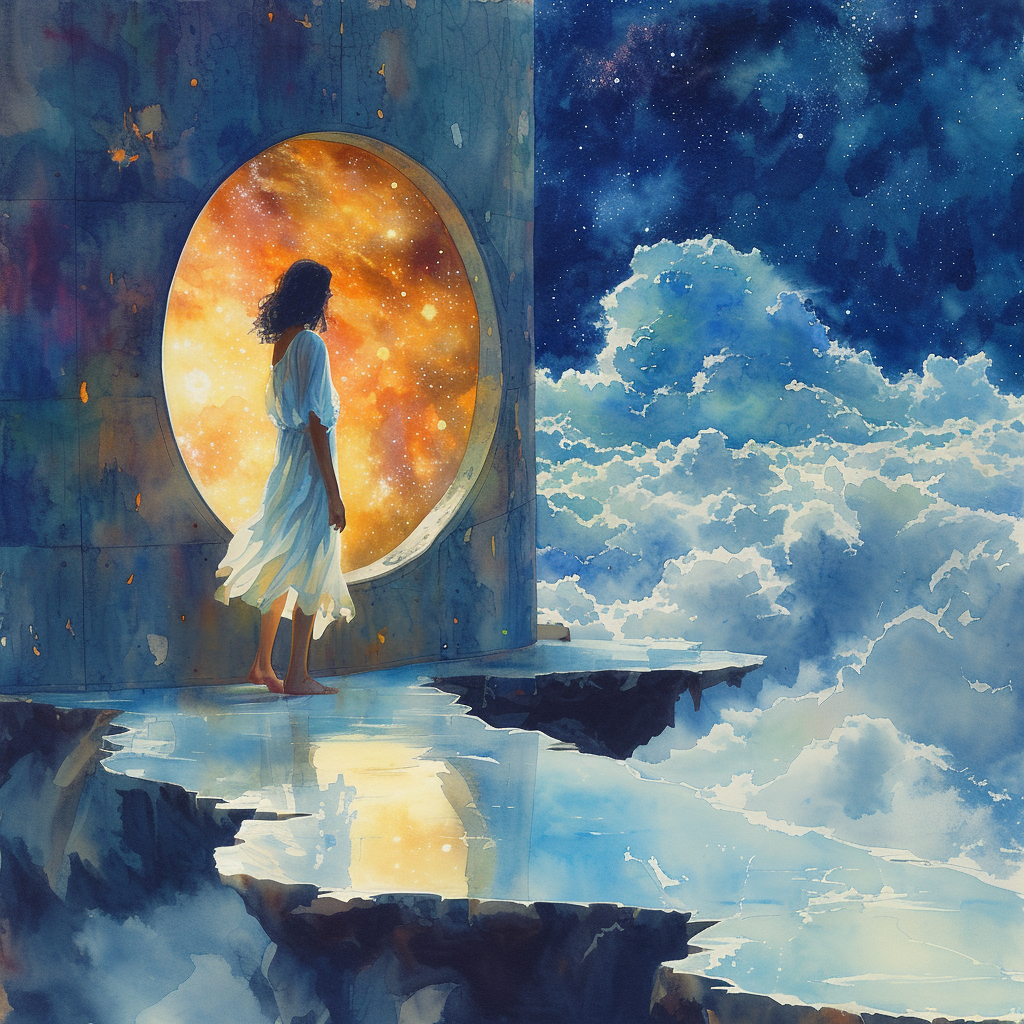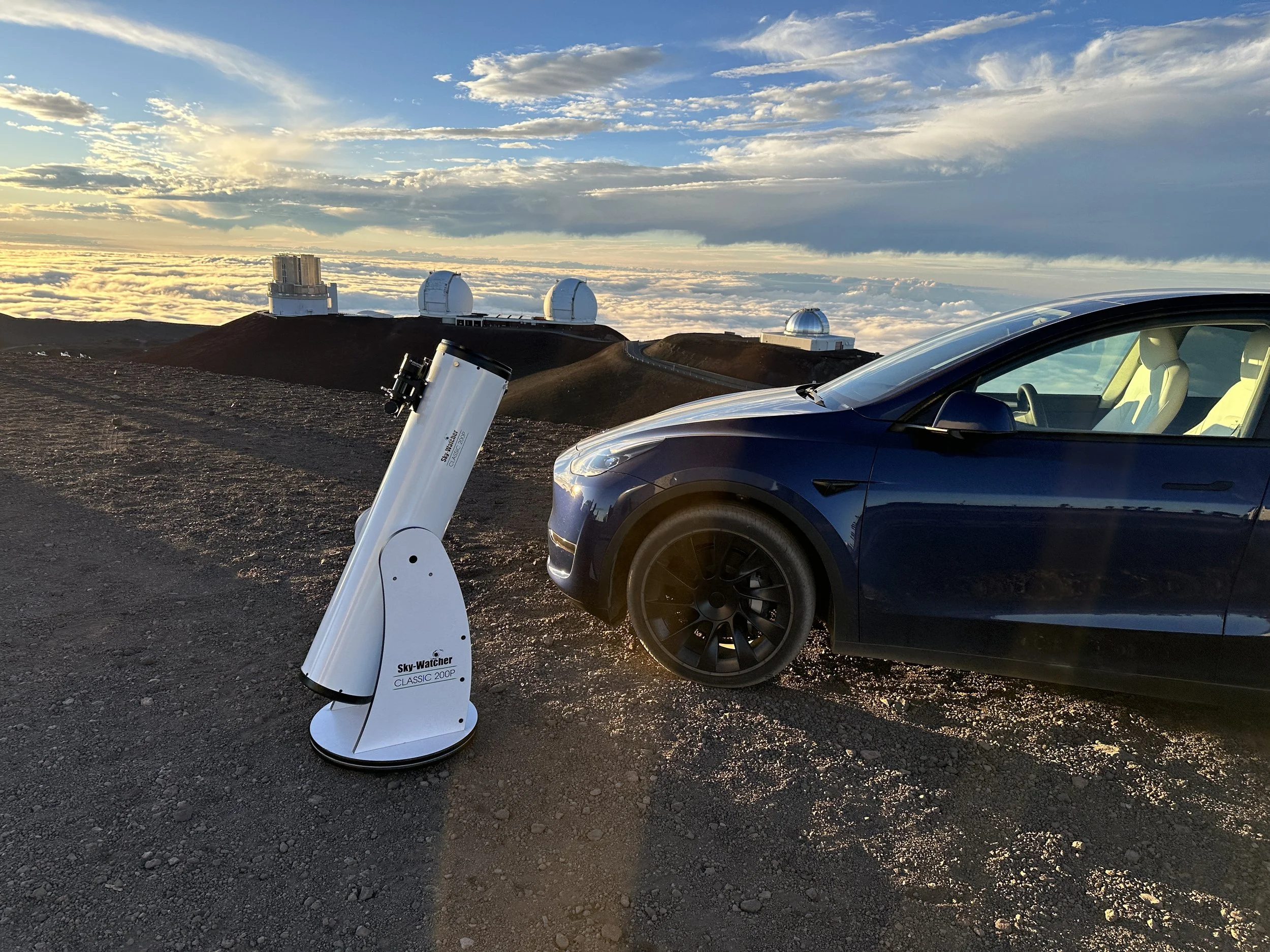Maunakea Observatory
After besting the volcano goddess Pele, the snow goddess Poli’ahu covered the peak of Maunakea with ice. She made her home there and now resides 14,000 feet up, side-by-side with the world’s best observatory.
Unaltered phone picture of the Milky Way
Above the cloud layer, thousands of miles from light pollution unimaginable detail reveals itself in the night sky. Myriad public guidelines ensure conditions remain pristine.
Your group will be the only people on the tour. I provide round trip transportation in my Tesla. No packing into a tour bus, no waiting in line to look through the telescope or get your questions answered. The experience will be personalized around what you’re interested in.
-
The celestial objects visible on your date are highly variable. I love talking about the night sky, that’s why I offer these trips. If you would like to know exactly what celestial objects will be visible on a given night please contact me.
Here’s a general outline of what happens on every trip:
Things start on the way to Maunakea. The drive is beautiful and I provide a foundation about why this site is so perfect for an observatory, history and mythology surrounding the site, geography of Hawaii and any other topics you feel like discussing.
The first stop is the visitor station 9,000 feet up. We will spend about an hour here acclimating. There is a marked path with unique, high-altitude flora as well as the visitor station’s informational displays. I will provide a meal for us as well, usually local Hawaiian food.
Next up is some pretty serious off-roading to get to the summit. A vehicle with a lot of power and ground clearance is required. An experienced driver certainly helps. You’ll be able to sit back and enjoy the view as you look down on the clouds.
At the summit there are 13 telescopes. Each has a unique story and reason for being up there. I’ll take you around to all of them and give you the details.
Watching the sun descend through the clouds into the Pacific ocean from a mountaintop 14,000 feet up is indescribable. It is worthy of it’s own trip up here and the reason many people come.
Once night falls we’ll drive back down to the visitor station. The staff will give a brief presentation while I set up my telescope, which you will have exclusive access to for the rest of the night. I will operate the telescope and get it pointed to interesting objects then let your group look through the eyepiece. If you’re interested in learning to operate the telescope yourselves (or are already familiar) I’m happy to help you do so.
After everybody has had their fill of the night sky I will drive us back to Kona. I’m more than happy to continue talking on the drive but you, most likely, will be asleep.
-
Scuba diving and extreme altitudes are a dangerous combination. You must wait at least 24 hours after scuba diving to come up to the observatory. Virtually all other activities (snorkeling, free-diving, etc…) are completely safe as is scuba diving AFTER going to the observatory.
Children under 13, pregnant women and anyone in poor health are not allowed above the visitor station per observatory rules. If you have any health conditions you should consult a doctor about the potential risks of high altitude exposure.
If your group contains anyone who would like to be a part of this trip but will not go to the summit feel free to contact me. We can discuss options.
-
Due to the highly unique climate features of Hawaii the Visitor Station and observatory almost always have clear skies. They both lie above the cloud layer. Even in the midst of the most torrential downpour viewing conditions from the observatory can be crystal clear. As with all things, extreme weather can happen. I’ve never known of problems reaching the Visitor Station but in extreme cases the road up to the summit is sometimes closed. Weather being the fickle thing it is, these events can’t be predicted and bear little correlation to the weather at sea level. In the unlikely event we are unable to go on our trip I will, of course, reschedule or refund you, whichever you prefer.
-
Typically the full trip lasts about 6 1/2 hours. I will pick you up about 3 1/2 hours before sunset and drop you off about 3 hours after it sets.
At the latest, that would be 3:30pm-10pm in June. At the earliest, that is 2:15pm-8:45 in December.
-
Bring an adventurous spirit and sense of wonder. Also helpful are pants and closed toed shoes. It’s cold at 14,000 feet, even in Hawaii. I will provide parkas with hoods. I’ll provide water but you may want to bring your own refillable water bottle.
-
Both spellings are commonly seen and nobody is likely to correct you. People such as myself who are pedanti…uh…”detail oriented” are aware that Maunakea is the proper name of Hawaii’s tallest volcano, while “Mauna Kea” technically refers to any snowcapped mountain. To get even more “detail oriented” Maunakea is actually the tallest mountain in the world. It’s 13,796 ft above sea level but it starts at the ocean floor. It’s overall height is 33,476 ft, making it over 3000 ft taller than Everest, but still dwarfed by the 72,000 ft Olympus Mons on Mars.



